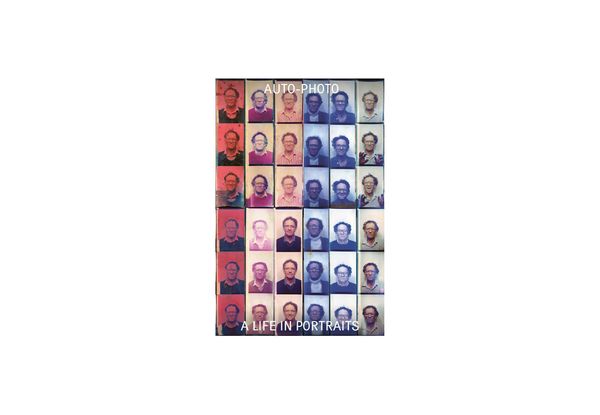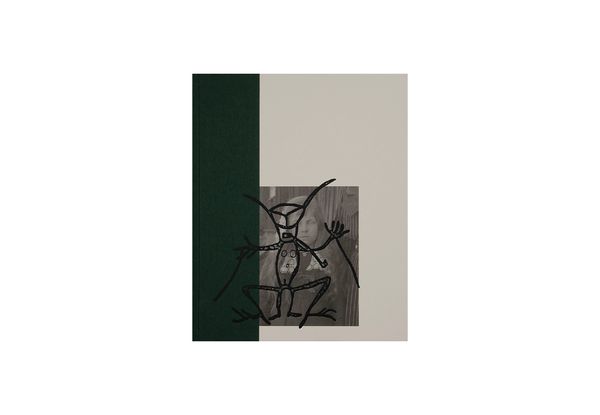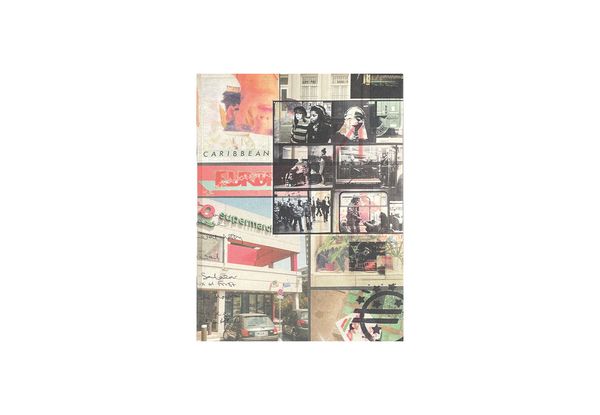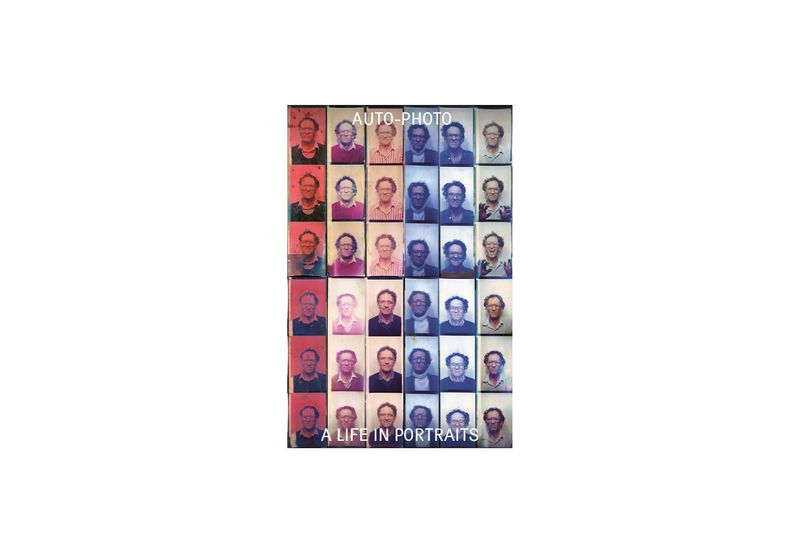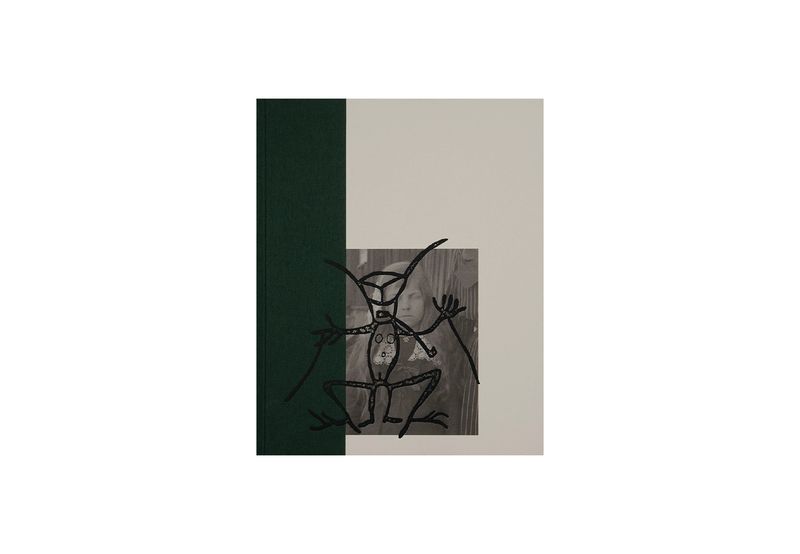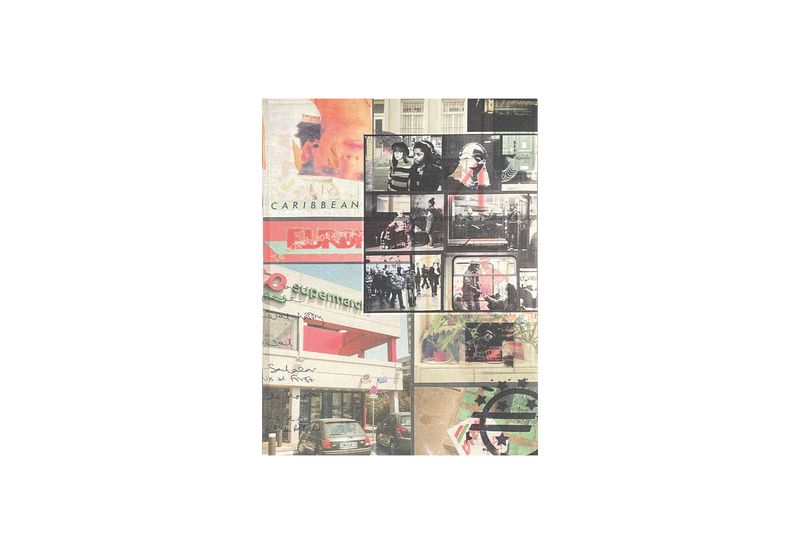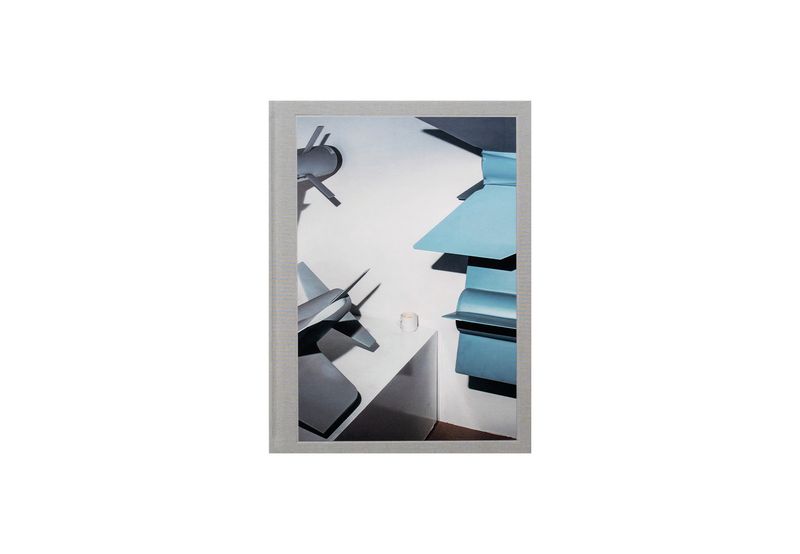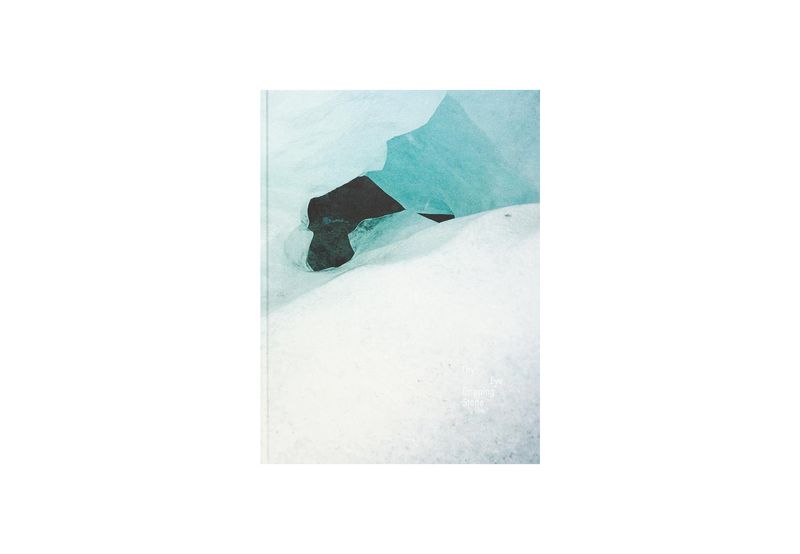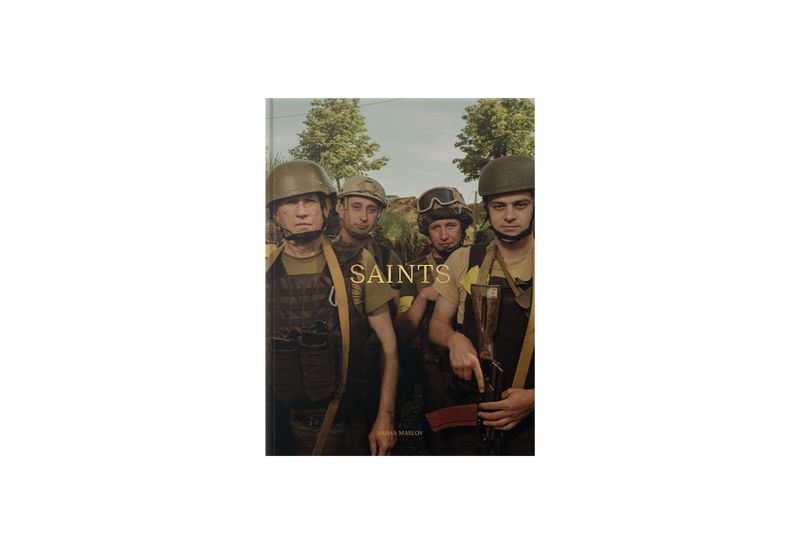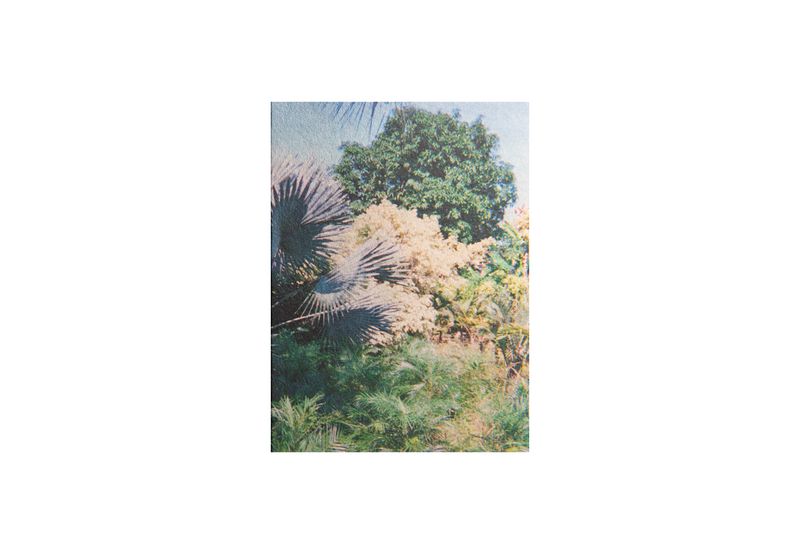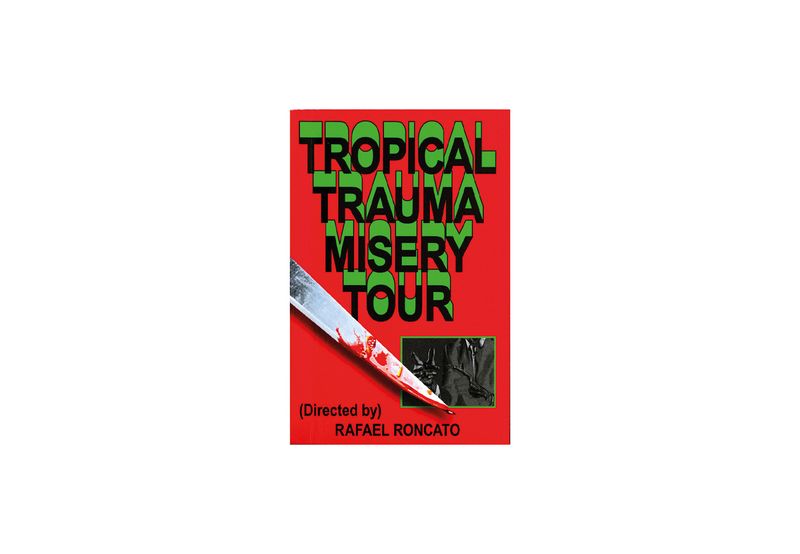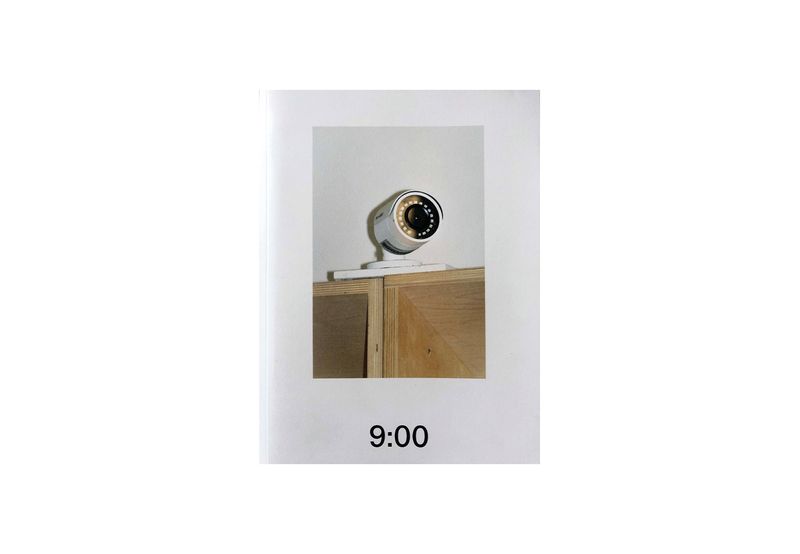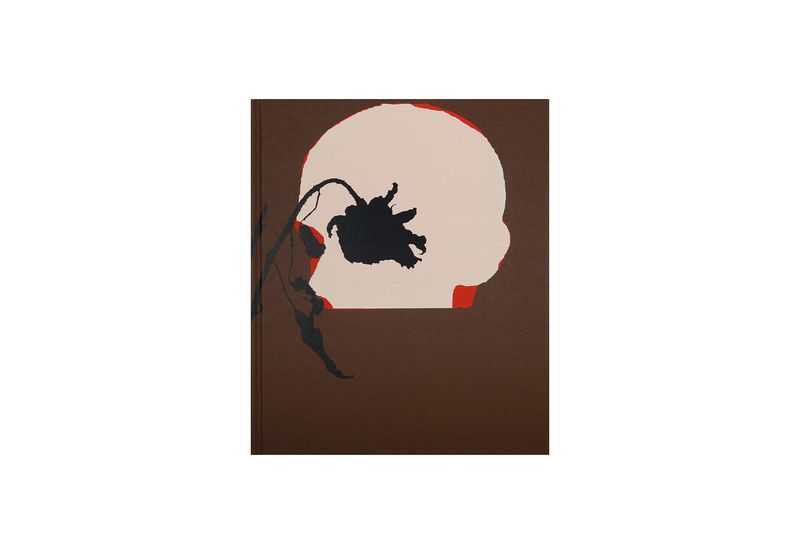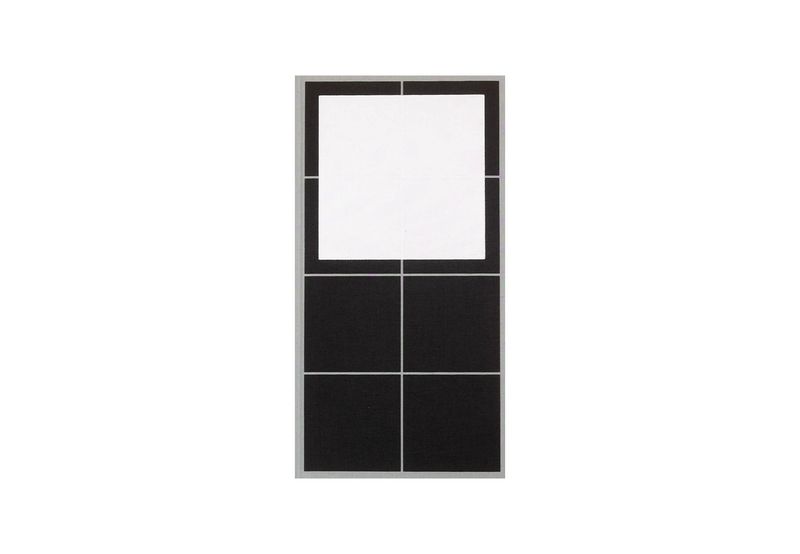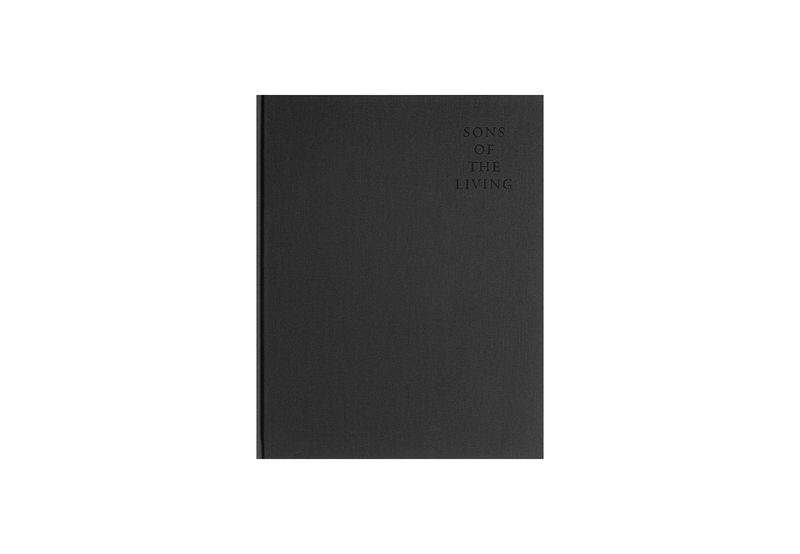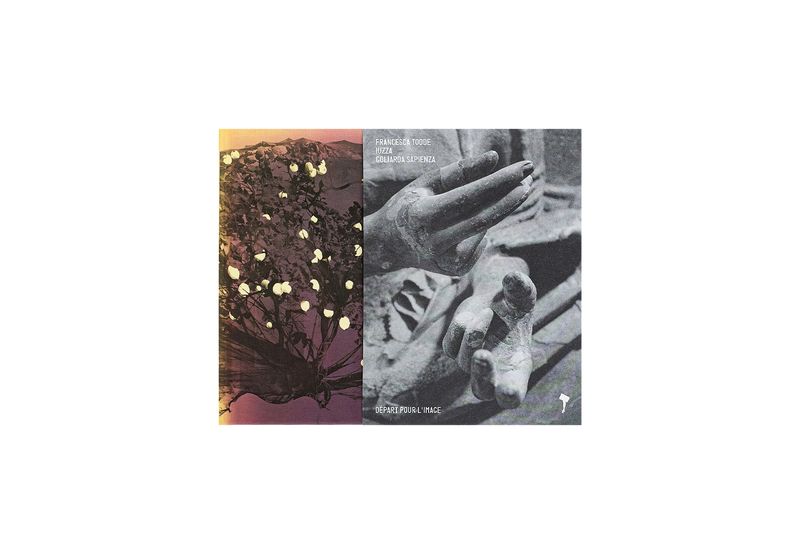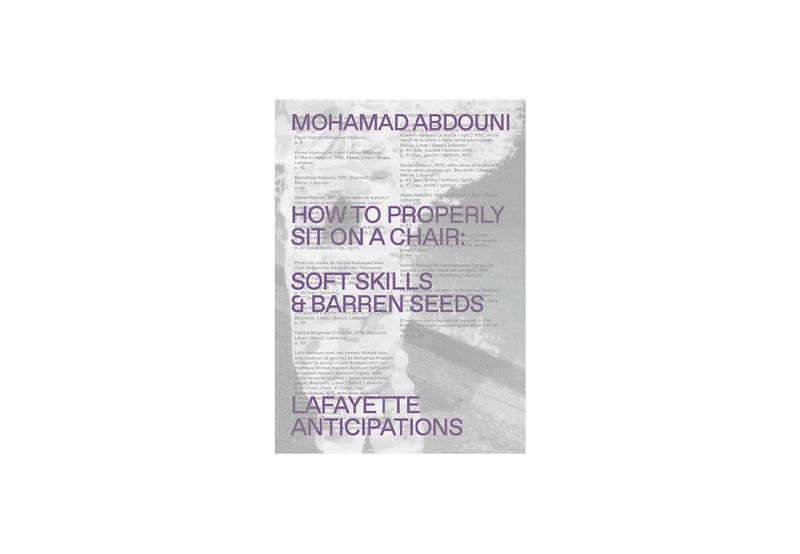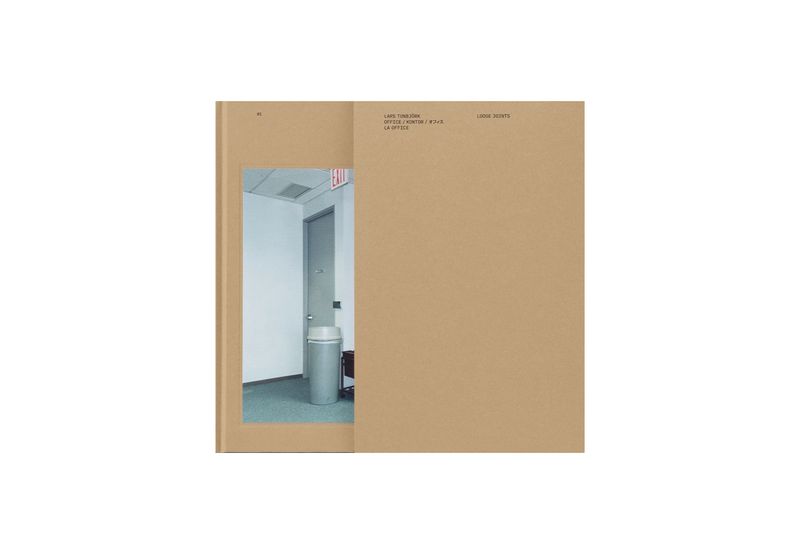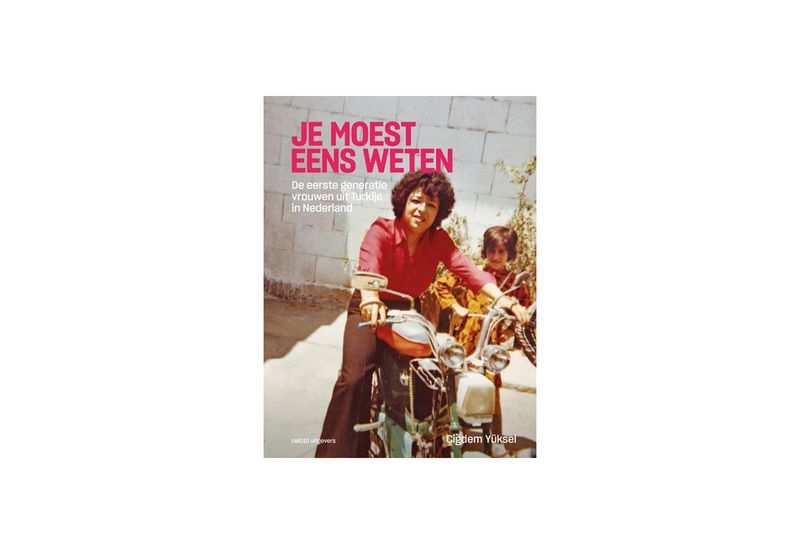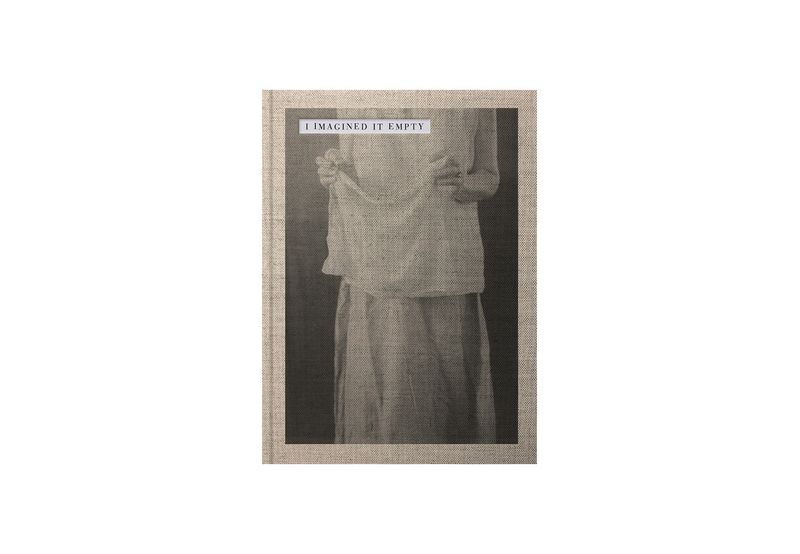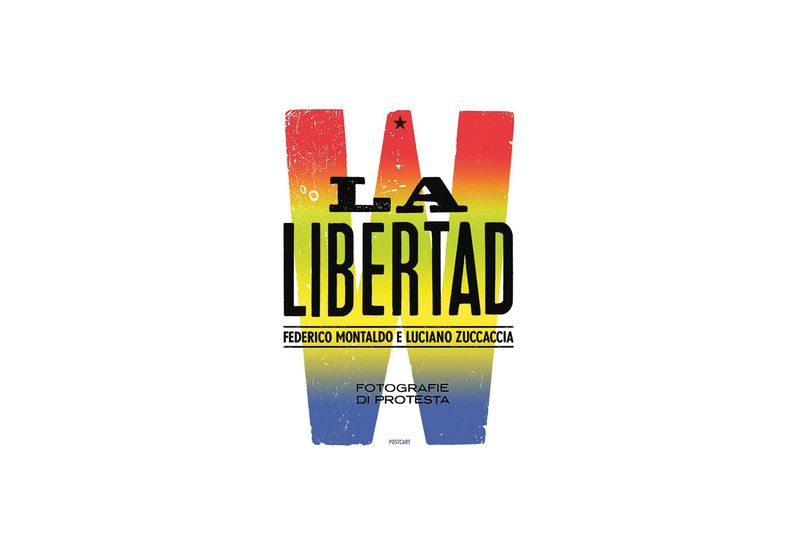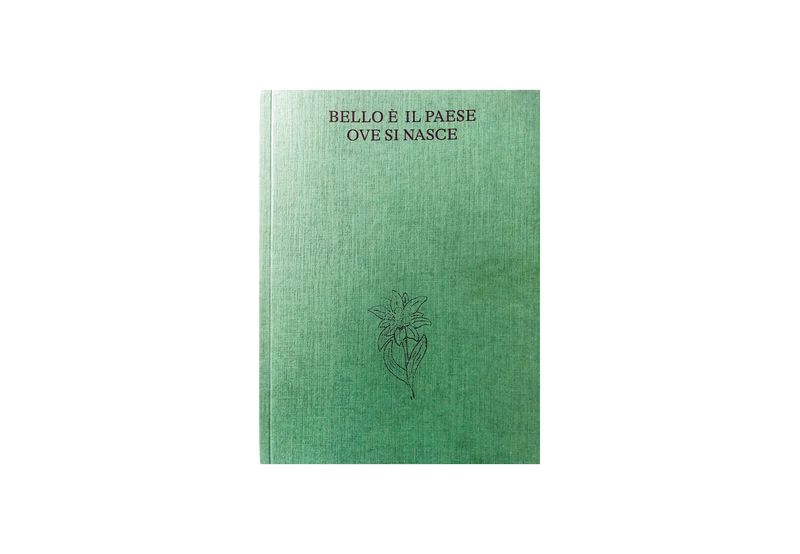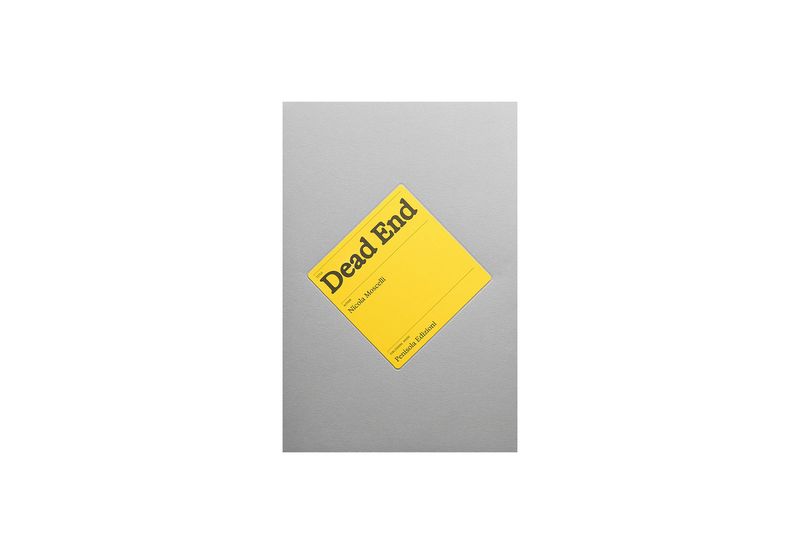Photobooks We Love From 2024
-
Published12 Dec 2024
-
Author
As we approach the end of the year, enjoy a curated selection of titles handpicked by PhMuseum's team, contributors and education program tutors.
Auto-Photo: A Life in Portraits
Perimeter Editions and the Centre for Contemporary Photography | Selected by Giuseppe Oliverio (PhMuseum Director)
Urban myths tell legendary stories like that of Alan Adler, allegedly the most photographed person in Australia thanks to his 50-year service as Flinders Street Station photobooth technician. Now in his nineties, Adler has since sold his photobooths to Metro-Auto-Photo, who have compiled this publication with the CCP and Perimeter. Thanks to his playful approach, the book allows us to discover Adler’s flamboyant personality, his relationship with the medium and the many layers that characterize the photographic portrait’s literature. Even more, it shows us glimpses of the working life of a human being in an analogic world - where a booth needed weekly testing to ensure the focus, flash, and print quality standards, and selfies were mostly used for bureaucratic purposes.
Gertrud by Maja Daniels
VOID | Selected by Eefje Ludwig (Independent curator and editor, and PhMuseum Education Program tutor)
Maja Daniels focuses on the legend of Gertrud Svensdotter, an eleven-year-old girl who was accused of supernatural powers in 1667, an event that set the Swedish witch hunts in motion. Daniels combines historical events with contemporary imagery, creating a fascinating and layered narrative. Her images are enigmatic and filled with tension. Gertrud connects the mythical history of small Älvdalen to broader social themes. The story of young Gertrud and the witch hunts of the 17th century is not only a tragic chapter from the past, but also a reflection on the lasting effects of fear and oppression. At that time, accusations of witchcraft were used to break old traditions and restrict women’s freedom. These mechanisms have an echo in our time, where issues of gender, power and control are still relevant. The photography in this book exudes an atmosphere of elusiveness and mysticism. Daniels invites us not only to look, but also to reflect.
Afropean: A Journal by Johny Pitts
Morel | Selected by Elisa Medde (Editor, Curator, Writer and PhMuseum CRITICAE Head Professor)
This is the latest, quintessentially visual instalment of the Afropean project - a multilayered, decade-long research into the lives and cultures of Black Europe.
This beautifully sequenced book puts together photographs, ephemera, text and music (yes, the book has a rhythm of its own), references and movies in a very fast-paced journey through the continent. This project is a gift that keeps on giving, and the collaboration between Johny Pitts and Aron Morel made for an excellent photobook.
Nothing Personal - The back office of war by Nikita Teryoshin
Gost | Selected by Lucia De Stefani (Writer, Editor and PhMuseum Editorial Contributor)
In an era where conflict dominates mainstream news and shapes our collective anxieties, Nikita Teryoshin takes us behind the scenes of war. With a touch of irony that doesn’t shy away from critique, Teryoshin’s Nothing Personal - The Back Office of War, published by Gost, offers a sharp exploration of what unfolds behind closed doors—before triggers are pulled or buttons are pressed. There are conversations unfolding between missile models; an unfinished cup of coffee sitting among rockets destined for the sky and explosions; buffets marking the unveiling of new naval weapons. Over seven years of navigating global arms expos, Teryoshin captures snapshots of an industry shaping the weaponry of the future. Yet, there are no scenes of death or destruction here. Instead, the focus is on business deals and practicality. By concealing people’s identities and capturing them in poses that contrast with the backdrop, Teryoshin constructs a metaphor for an industry that, as he explained, prefers to operate in the shadows—a nod to the classic "fog of war," present even before the first shot is fired.
Dry Eye Dripping Stone by Line Bøhmer Løkken
Multipress Forlag | Selected by Camilla Marrese (Graphic Designer, Photographer and PhMuseum Visual Editor)
Dry Eye Dripping Stone is a book about vision brought alive by touch. Images are printed on IBO, a light and soft 60 gsm paper. They overlay as we flip through. The pressure made by our fingertips modulates this interaction – the extent to which we will let the previous image enter, and change, the one we're watching. Textures come together, edges and margins give shape to ever-present backdrop shadows. Pages and pictures are strata of accumulated memories. Like a geology of the eye, this work by Line Bøhmer Løkken reminds us of the layered construction of images in our brains, sight being a constant act of contamination. As I get to the last page, I feel as if I’ve witnessed the build up of one single, endless photograph with blurry edges, carefully housed in this hyper-thin, yet stone-solid book. A short text completes the book. It reads: “The tumor winds itself around your optic nerve and suffocates it slowly. [...] I close my eyes and try to imagine myself as a photographer without sight, left only with the images preserved in my body”.
SAINTS by Sasha Maslov
IST | Selected by Arianna Rinaldo (PhEST Photography Curator, Photo Editor and PhMuseum Education Program tutor)
The book is heavy as the stories it carries. More than 300 pages of portraits telling the lives of Ukranians that since February 24th, 2022 have taken a dramatic turn with the brave and resilient intention to fight against the invasion of Russia within their own country. A biblical black cover, dressed with a dust jacket that looks you in the eye, SAINTS holds over 100 large portraits, bathed by a warm light. They are soldiers, fighters, medics, everyday people, who have put their job, their skills to use for the same purposes: resist and protect their country and freedom, fight for their people’s existence and culture, win and reclaim their land, live in a peaceful and democratic environment.
Childrens are portrayed, their stories narrated: nobody is spared by the tragedy of an insane war. Some of the people in the book have died, killed by the absurdity o conflict or injured but still active within their possibilities. The portraits become icons, modern icons, contemporary saints. The stories written by war correspondent Nastia Stanko are detailed and personal and make each and every person an individual as a well as a symbol of resilience. SAINTS is a document and a tribute to their sacrifice, a necessary narration of lives broken by a brutal war in contemporary Europe.
Saints is a photo book made in partnership with the Canadian foundation Saint Javelin and published by Kyiv-based publishing house IST. Texts are written by Ukrainian war correspondent Nastia Stanko.
Las Flores Mueren Dos Veces by Cristóbal Ascensio
Dispara | Selected by Rosa Lacavalla (Photographer, Visual Artist and PhMuseum Assistant)
We observe our plants, noticing their growth, changes, and needs, just as we reflect on memories, revisiting them and understanding their significance. We provide the first ones with the right environment, water, and sunlight, while we cultivate the second ones through journaling or photos. Las Flores Mueren Dos Veces digs into loss and renewal, told through the lens of a garden. Blurring the boundaries among photography, digital manipulation, and virtual reality, Cristóbal Ascensio delves into a deeply personal journey of grief and reconciliation. By revisiting family archives and the last garden tended by his late father, the artist deconstructs and reimagines the past, blurring the lines between reality and memory. Plants that continue to thrive, even in the face of absence. This work, published just a few days ago by Dispara, brings us to observe and take care of our plants to whom we entrust our thoughts, with a new point of view, reflecting on the complexities of human connection and the relationships that we once formed and that continue to develop after death. The delicate balance between nurturing and letting go, reminds us that both plants and memories thrive when given the right care and attention.
Tropical Trauma Misery Tour by Rafael Roncato
The PhotoBookMuseum, MASA, Lovely House, Alter Edições | Selected by Talita Virginia (Storyteller, Cultural Worker and PhMuseum Social Media Manager)
A fake knife, a semi-president and network propaganda. These are the elements that comprise the staging of a media tragedy narrated by Brazilian photographer Rafael Roncato. Published by MASA, the book investigates with sour humor the presidential term of the “Trump of the Tropics”, aka Jair Bolsonaro. Alternating video footage, newspapers, social media posts and a fake president portrayed in a studio in The Netherlands, the book is a hallucinatory journey through the four years of the first far-right administration in Brazil after its re-democratization in the late 1980s. A book with lighting effects and loud noises that could be a film, a post, or simply a Whatsapp message.
MUSEUM 9:00-5:00 by Giulia Zichella
Corraini Edizioni with ISIA Urbino, print-on-demand | Selected by Erik Kessels (Artist, Designer, Curator and PhMuseum CURAE Head Professor)
A wonderful thick chronicle style book about Zichella’s part-time job in a Museum, showing all the parts of a museum that a museum normally doesn’t want to show. Zichella photographed all the sceneries in the fringe of this museum. This makes this book as a total and as a work ready for a museum again. Giulia Zichella did this work at ISIA Urbino Photography department this year.
Epitome by Vic Bakin
VOID | Selected by Colin Pantall (Writer, Photographer, Lecturer and PhMuseum Editorial Contributor)
My favourite photobook of the year is Vic Bakin's Epitome. It's a book that weaves landscape, conflict, and masculinity into a world of its own. It's a book where the process of making the images in a compromised bathroom darkroom connects with the fragility of the country they are made in, Ukraine, and the men who feature in the book.
Anima Mundi by Máté Bartha
Eriskay Connection | Selected by Giuseppe Oliverio (PhMuseum Director)
Anima Mundi is a philosophical term used by the Platonists to indicate the vitality of nature in its totality, where each individual organism is different yet linked to each other. It is also the source of inspiration for Bartha's research, which focuses on the concept of modern cities to explore the human needs for creating and developing complex ecosystem. The book, which takes a squared format when open, is organised into grids where images are also squared or broken into squares. Yet this obsessive organisation is not able to compensate for the hundreds of elements and microcosms that compose the urban landscapes. We feel lost and yet challenged in putting dots together to make sense of this solid research which offers an interesting angle on the Anthropocene and its limits.
Sons of the Living by Bryan Schutmaat
Trespasser | Selected by Lucia De Stefani (Writer, Editor and PhMuseum Editorial Contributor)
There is a ribbon of light tracing the curves of the road, the fleeting passage of vehicles dividing the landscape (perhaps our lives?) into shadows and brightness. We are on the highways of the southern U.S., transient spaces both solitary and alive, where souls meet between arrivals and departures—in between. And it’s in this in between that the protagonists of Bryan Schutmaat’s Sons of the Living, published by Trespasser, dwell: hitchhikers, drifters, fellow travelers moving through the south. Perpetually on the move, they break free from societal norms and the weight of rules and expectations.
Schutmaat portraits them as he captures fragments of our shared humanity against a landscape both austere and still capable of mercy—an era where God seems absent (as perhaps hinted by the missing letters on a weathered sign, possibly an old gas station). In their faces, he encountered sadness but also a glimmer of hope, fragile as the faint light breaking through the shadows.
IUZZA. Goliarda Sapienza by Francesca Todde
Départ Pour l'Image | Selected by Rosa Lacavalla (Photographer, Visual Artist and PhMuseum Assistant)
We often feel like watching movies after reading the novels from which they are based. In this case, one feels like reading a novel by Goliarda Sapienza after browsing and observing Francesca Todde's images. The artist carries on her search of Iuzza, as the Italian novelist was called as a loving childhood nickname back in Sicily, where she came to the world in 1924. The care of the research itself, the details present in and out of the images and the texts within the book lead you to flip through it slowly, to take your time, reflect, and return to those pages again. The presence of the bookmark is essential to know where our own journey is at the moment. An encounter that becomes a delicate adventure, a night sea crossing in search of Goliarda Sapienza but at the same time in search of our own emotional connections and inner landscapes. Francesca Todde makes us fall in love with literatures and visual poems.
Published by Depart Pour L’Image, with texts by Luca Reffo, IUZZA. Goliarda Sapienza marks the hundredth anniversary of writer Goliarda Sapienza (1924-1996), whose work, long in the shadows, is now recognized as one of the most important in Italian literature.
How to Properly Sit on a Chair: Soft Skills & Barren Seeds by Mohamad Abdouni
Lafayette Anticipations | Selected by Elisa Medde (Editor, Curator, Writer and PhMuseum CRITICAE Head Professor)
This book is a little gem. Printed with riso and xerox, it is a publication accompanying the namesake solo shows Abdouni presented simultaneously at Lafayette Anticipation in Paris and Marfa Gallery in Beirut. It’s a journey into childhood and family, Lebanese history and masculine identity, land and culture. It’s a tribute and a manifestation, an act of love and rebellious grace. It is also a journey into the creative universe Abdouni has created over the past few years, blurring the lines of the medium to explore generative imagery and ceramics next to photography, archival materials and text. Also, it has stickers.
Office / LA Office by Lars Tunbjörk
Loose Joints | Selected by Camilla Marrese (Graphic Designer, Photographer and PhMuseum Visual Editor)
Lars Tunbjork’s photographs are set in sterile, geometric, hyper-organized carpeted boxes, awkwardly inhabited by people whose uniforms blend with desks and room dividers. If I weren’t a human being from this or the past century, I’d have a hard time figuring out which kind of boring dystopia these environments could belong to.
Loose Joints posthumous re-edition of Office, originally published in 2001, embodies the visual architecture of bureaucracy, of dreams of efficiency and corporate values. The re-design, bringing in Kraft paper and a slipcase, helps the book camouflage within ordinary office racks. An addendum to this edition, David Graeber’s essay “Bullshit jobs” points at how the advancement of technology is caging us in less and less meaningful systems, while it failed at reducing our working hours. The world we live in now might have flatter screens and smoother workspaces than in Tunbjörk’s pictures, yet we still relate to their same absurd sense of alienation.
Çiğdem Yüksel: Je moest eens weten. De eerste generatie vrouwen uit Turkije in Nederland
NAI010 | Selected by Eefje Ludwig (Independent curator and editor, and PhMuseum Education Program tutor)
The photobook by photographer Çiğdem Yüksel is a compelling and visually powerful document that brings a forgotten chapter in Dutch history to the fore: the lives of the first generation of Turkish women in the Netherlands. Yüksel combines photography and oral history to paint a unique and moving portrait of these women, who built a new life in a foreign country from the 1960s onwards. Yüksel didn't just go out with a camera; she built a bond with her subject, visited their homes and delved into yellowed photo albums with them. This process has resulted in intimate images that feel both nostalgic and urgent. The stories of these women are not only personal histories, but also powerful testimonies of migration, integration and the resilience of women. The book is more than a documentation of a certain time; it is a bridge between generations. The stories are recognizable and universal: about saying goodbye, adapting and dreaming for the future. At the same time, the photos provide a rare insight into the intimate moments of a generation of women who had to find their place in a new society. Çiğdem Yüksel has made a valuable contribution to Dutch history and photography by making these forgotten stories visible. Her empathetic and innovative approach encourages reflection and offers a new perspective on migration history. It is not only a tribute to this first generation of Turkish women, but also a call to look more closely and listen to the stories that have not yet been told.
I Imagined It Empty by Ruth Lauer Manenti
RM, Phree, Ediciones Posibles | Selected by Arianna Rinaldo (PhEST Photography Curator, Photo Editor and PhMuseum Education Program tutor)
Looking at Ruth’s book you can feel the texture of the cloth being held, portrayed on the cover of this poetically crafted book. Throughout the inner pages you can feel the warmth of the sunlight coming through the windows, the roughness of the wooden table, the sound of the sweeping gestures. You hear the silence, you feel the loss and emptiness, and at the same time the plenitude of presence. When loved ones pass away, their aura remains in the places and objects they inhabited and held. They lovingly fill the rooms as well as our hearts. Ruth, an artist just like her late mother, expresses beauty, nostalgia and love with a minimalistic series of images that you cannot stop looking at over and over.
Winner of the Star Photobook Dummy Award. Co-published by RM, Phree and Ediciones Posibles.
W La Libertad, Fotografie di protesta by Federico Montaldo, Luciano Zuccaccia
Postcart Edizioni | Selected by Talita Virginia (Storyteller, Cultural Worker and PhMuseum Social Media Manager)
Federico Montaldo and Luciano Zuccaccia present an extensive investigation on the protest genre, with 22 case studies. From Argentina to China, from the Iranian revolution to Colombian banana workers, the book reveals the stories and characters behind iconic projects developed by photographers such as Laura-El-Tantawy, Paolo Gasparini, Gideon Mendel, Kazuo Kitai, among others. An elegantly designed book published by Postcart that is valuable research material for those interested in the subject, both inside and outside the axis of the Global North.
Bello è il Paese ove si Nasce by Michela Del Longo
Corraini Edizioni with ISIA Urbino, print-on-demand | Selected by Erik Kessels (Artist, Designer, Curator and PhMuseum CURAE Head Professor)
Del Longo, born in Venice, and another talent coming from the ISIA Urbino photography department, made this touching book about the rural area of her ancestors. In an anthropological type of study, she documents all the folkloristic monuments from this area. Unfortunately, the book is only in Italian, but it is really made with a lot of precision and devotion.
Dead End by Nicola Moscelli
Penisola Edizioni | Selected by Colin Pantall (Writer, Photographer, Lecturer and PhMuseum Editorial Contributor)
Nicola Moscelli has never been to Mexico yet somehow he manages to conjure a great book out of the streetview images that show the border between the USA and Mexico in his book Dead End. A rigorous editing and design process has been applied to the images which are accompanied by texts that are surprisingly informative and even soulful at times. It's a beautifully made, thought-out, and designed photobook.
--------------
Every month we publish photobook reviews and features on PhMuseum. In 2025, we will announce further initiatives related to photographic publishing. Subscribe to our weekly newsletter if you wish to know more and be updated on all upcoming activities.
